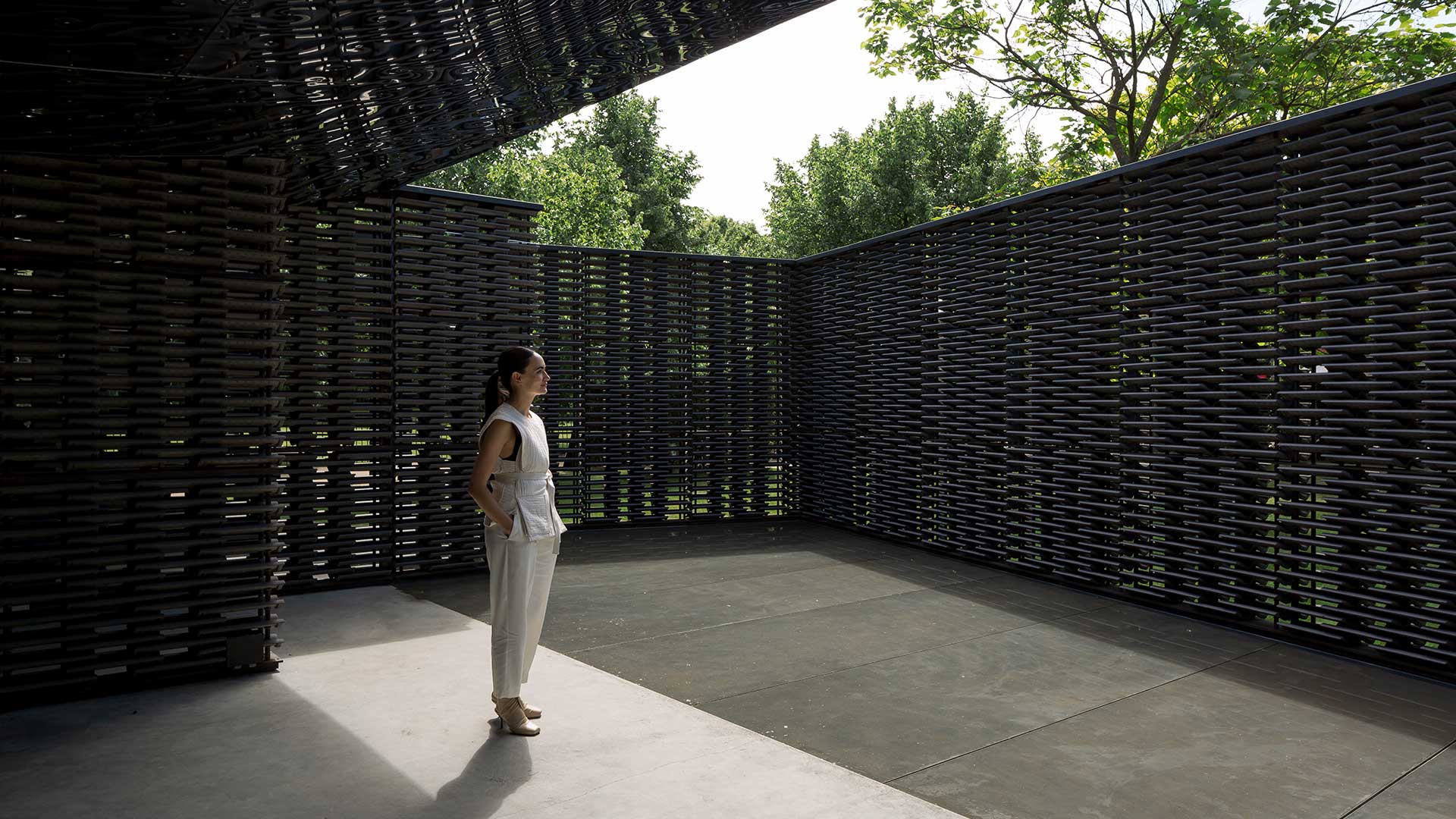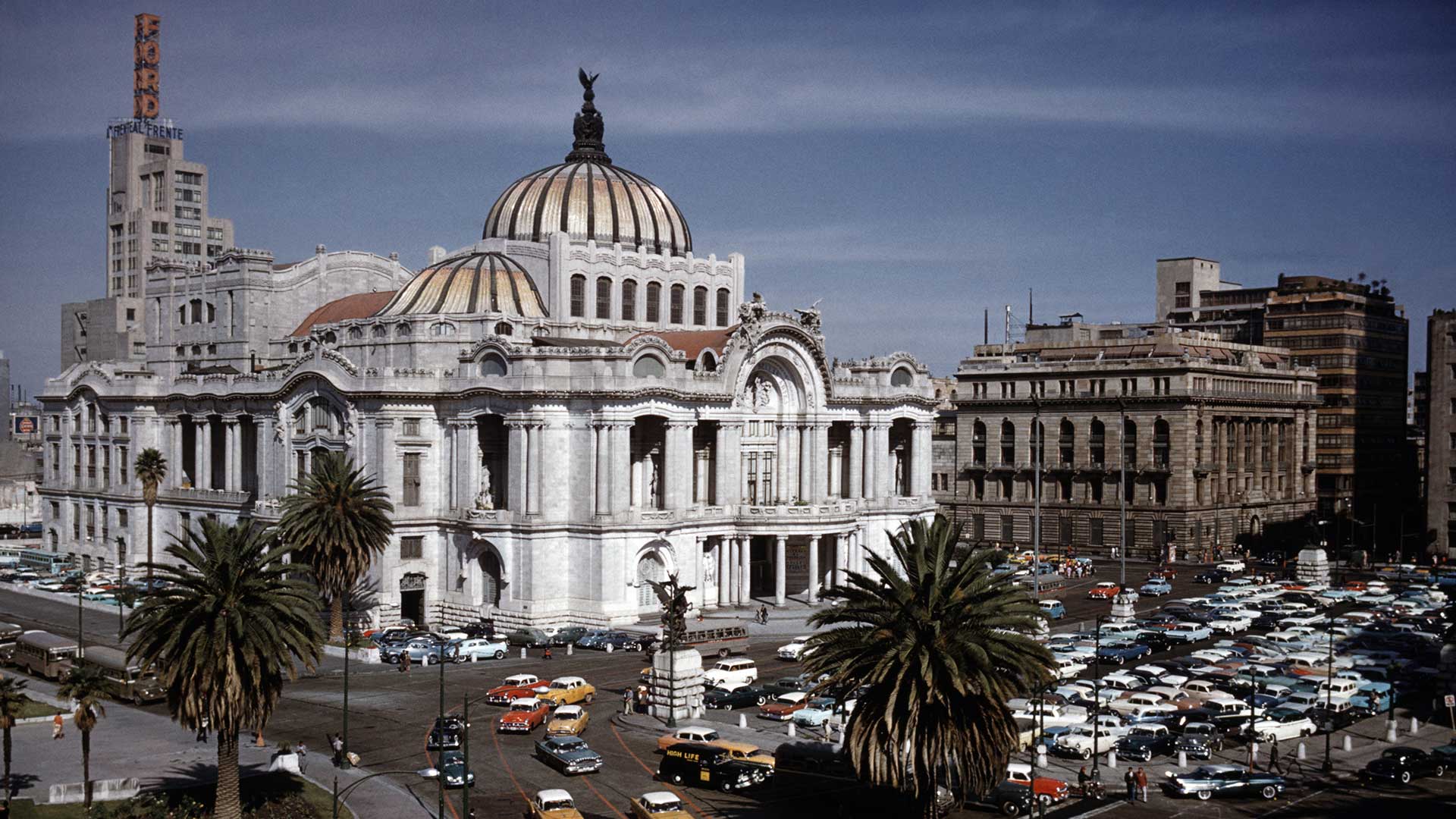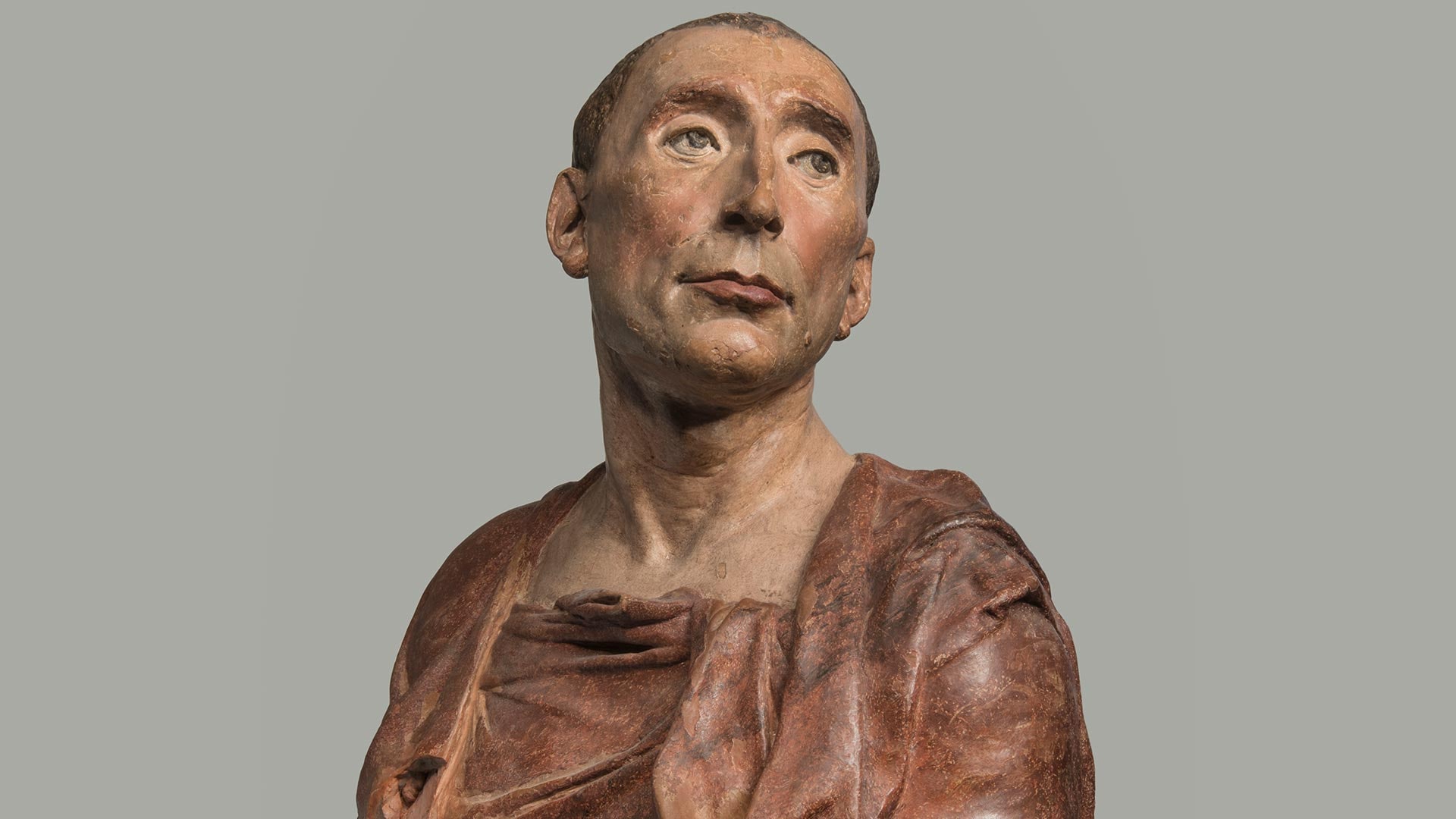Although she is still in her thirties, Frida Escobedo has already become an indispensable voice in architecture. Her practice, in her native Mexico as well as internationally, has ranged from conceptual installation projects to retail stores to home design, with commissions for such organizations as the V&A Museum and MoMA PS1 and a spate of prizes along the way. Her eclectic oeuvre includes such structures as the Casa Negra, co-designed with Alejandro Alarcón: a low-cost home studio—simultaneously stout and elegant, built of cinderblock and sitting atop stilts—that faces inward from the periphery of Mexico City like a large-format view camera. More recently, she adapted the workshop and house of the artist and activist David Alfaro Siqueiros for use as a gallery, connecting and recontextualizing existing buildings with an openwork lattice wall of concrete. This same overlayering of public and private was visible, most recently, in her design of the 2018 Serpentine Pavilion, a project for which she again incorporated an element integral to Mexican home design—the secluded courtyard, and the celosia (perforated breezewall)—to a specifically British context. The result is an interior space for contemplation and seclusion, a chamber interpenetrated by sunlight and air, in the midst of Kensington Gardens. Like the rest of Escobedo’s work, it resolves innate tensions quietly, without puns or showmanship, and with a tender attention to the context of the people who will experience it. Were you in Mexico City during the earthquake of 1985? I was. My parents had separated a few weeks before the earthquake and my mother stayed in the apartment where we’d been living, in La Condesa. I was very little: five years old. I remember that it was very early in the morning. Toys began to fall over; I was putting on my sports uniform; my mother, with a towel on her head, tells me, “Run!” We lived in the ground-floor apartment, and my bedroom looked out onto the street. There was this space between the building and the gate that led to the street. We ran out so fast that my mother forgot the keys to the outside door, so we stayed in that space between the house and the building. It was frightening but my mother handled it well. Does that building still exist? Have you gone? I could draw you a floor plan of the apartment, I could draw the pattern of the walls—my spatial memory of that space is very fresh. But I have not been. I would like to go, it’s one of the things I’d like to do, but then I say no, because my memory is so vivid that I don’t want to taint it. Maybe I could draw it first and then go to compare it with my recollection. We lived there for a few months and then we left. Do you remember walking through the city after that earthquake, seeing the rubble? Yes. On the corner near the apartment where my father moved, on Valladolid Street, a building collapsed. For the four or five years that my father lived there, that building on the corner was in ruins. Someone lived in those ruins there, an alcoholic named Ángel. My father became his friend, would say hello to him and treat him like just another neighbor. I was aware that Ángel lived in the wreckage, and this was very disturbing; the idea terrorized me. Then my father moved, and not long ago they put an apartment building on that corner. In this city, you live with ruins. The debris is just there, it continues to be there and we forget.
Please sign up for Aesop Hong Kong's WhatsApp to ensure your data is secured for system upgrade.Learn more
Cart
Size
Quantity
We are pleased to offer shipping to Hong Kong SAR, China and Macau SAR, China.
All prices are listed in HKD.
Included Taxes


